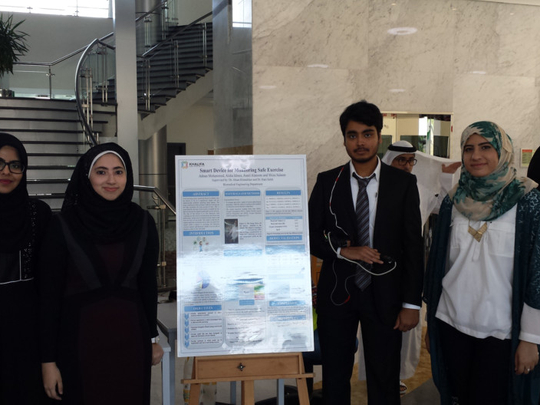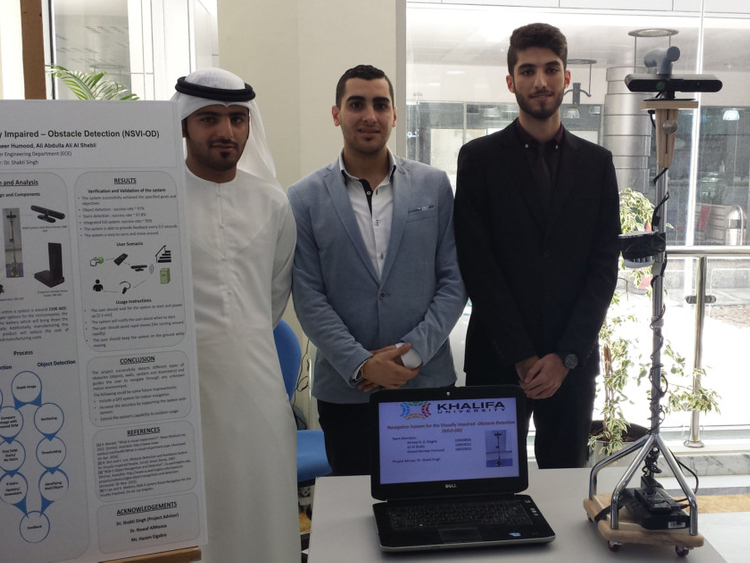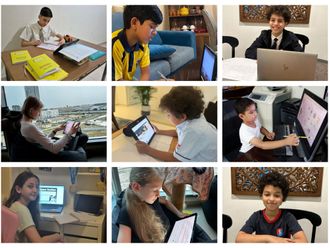
Abu Dhabi: Students from Khalifa University have developed a device that can help visually impaired people navigate their surroundings, with the device being showcased as part of the university’s innovation exhibition.
Developed by four senior students, the project was just one of many to be displayed during the exhibition, allowing students to showcase their creative projects and ideas that could benefit the UAE.
“During the initial planning stages of our project we contacted the Zayed Higher Organisation for Humanitarian Care and Special needs and we asked them what they would like to see in a device to help visually impaired people, and they told us they would like to have an obstacle detection system, and so that led to the idea,” Ahmad N. Alagha told Gulf News, one of the students behind the development of the project.
“Our device is attached to a walking cane which helps the visually impaired navigate through any unfamiliar or unknown environment. The device tells the person about any obstacles that they are walking into and to avoid them.
“For example, if there is an obstacle in the way of the person, like a table or a chair, the device will give them a warning, and once the person clears his path from the obstacle, the device will also let that person know. This will be done through an automated voice on a speaker or a headset connected to the device,” he added.
According to Alagha, the device has been programmed to detect different types of obstacles that a visually impaired person might come across.
“The system is able to differentiate between different obstacles like walls, or even ascending stairs and descending stairs and will give that person an audio response depending on the type of obstacle,” he said.
Another project featured at the exhibition, was a smart device that can monitor when a person over exercises while training.
“During our research we found that many athletes and non athletes often over trained or did more exercise than needed, which would lead to accumulated damages to the body over time. As a result, we decided to build a device that could inform the person exercising when they have reached their limit or when they reached the point of exercising too much,” said Adnan Mohammad, who helped create the device.
“Our device is a wearable one that can monitor and take in several bio-signals such as a person’s temperature, heart rate, oxygen saturation, and oxygen consumption.
“Based on the information that is being received, the device can let the person know at which stage at they are. So if they start to over exercise the device will turn red, and this is to let the person know that they are starting to enter the danger zone. When the colour is green, it means that they are at a safe level of training,” he added.













